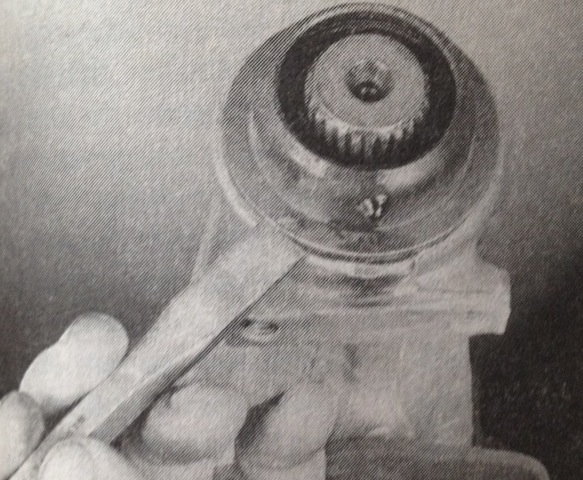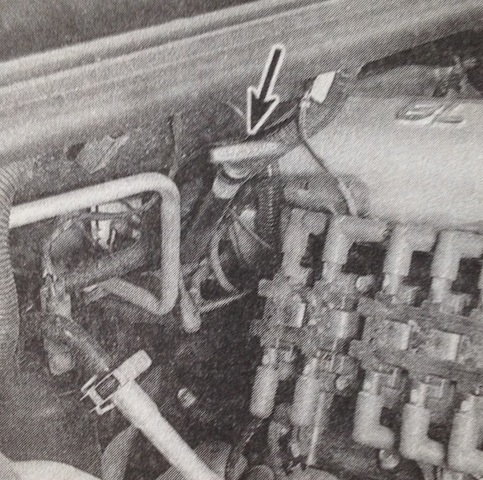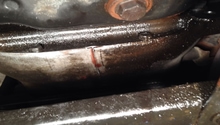Dodge Ram 1994-2001: Why is My Transmission Leaking?
Most of the time when you have an oil leak, it's probably engine oil. But of course your transmission can also leak some oil.
This article applies to the Dodge Ram (1994-2001).
Any fluid leak is nothing but frustrating, no matter where it comes from. Here we're going to go over transmission leaks and what might be causing them. We will break it down into manual transmission leaks and automatic transmission leaks because we don't want to leave anybody out of this topic. Manual transmissions are much simpler units, so they are going to have much fewer causes for leaks than automatic transmission leaks. Any leak is a sign of an issue, but for an automatic, it's extremely critical that you figure out what is causing the leak due to the fact that your automatic transmission will not operate without the correct amount of transmission fluid. It uses its fluid for operation, where as the manual transmission uses it to lubricate the gears and components inside of it.


DIY Cost Breakdown
- Transmission Seals: $8-$68
- Transmission Pan Gasket: $5-$6
Materials Needed
- Flashlight
- Inspection mirror
- Rags
- Old turkey baster or syringe
- Hammer and chisel or seal removal
Before beginning, you will want to wipe down any wet areas. This will help you better see where the leak might be coming from. You might also want to go ahead and drive it a little bit after wiping it down. Some leaks will only occur when the vehicle is in use. Also, take note of how much fluid is leaking and the frequency of the leak. This will help you determine the severity of it.
Manual Transmission Issues
Too Much Fluid in Transmission
This is a very common cause of fluid leaking out of a manual transmission. Most manuals transmission do not have a dipstick, and it is very easy to overfill them if you are not familiar with how to gauge the level.
You can check the level of fluid in your manual transmission as follows:
- Unscrew the fill plug from the transmission. It is located on the side of the case.
- Use your finger to reach inside the housing and feel the lubricant level. The level should be at or near the bottom of the plug hole.
- If the fluid level is too high, use an old turkey baster or syringe to extract any excess fluid.

Figure 2. Manual transmission fill plug.
Transmission Oil Seal
There is a seal at the very end of the extension housing of the transmission where the driveshaft splines into the transmission. It is common for this seal to wear out and cause leaks. It is fairly easy to replace. All you have to do is remove the driveshaft and then you will gain access to the seal. A hammer and chisel or seal removal tool will help you to remove the seal.

Automatic Transmission Issues
Pan Gasket
The automatic transmission has a fluid pan similar to that on your engine. It has a gasket between it and the mating surface of the transmission housing. First thing you will want to do is check the tightness of the bolts that hold the pan to the transmission housing. If they are snug and it still leaks from here, you will need to replace the pan gasket.
Filler Pipe
The filler pipe that allows you to add transmission fluid into the transmission has a rubber seal where the pipe enters the transmission case. This rubber seal can wear out, causing fluid to leak from the joint.
Transmission Oil Lines
The connectors where the lines enter the transmission case can loosen and start to leak. If your leak is coming from the lines, you will need to check the connectors for their tightness. If you tighten them and they still leak, then you will need to replace the lines with new ones.
Vent Pipe
If there is fluid coming from your vent pipe, then you more than likely have too much fluid in your transmission. Check the fluid and drain as necessary.

Figure 4. Auto trans dipstick location. 
Figure 5. Auto trans dipstick level diagram.
Checking Your Transmission Fluid
- Start the engine.
- Move the shift lever through all the gear ranges, ending in neutral.
- Check the fluid level with the engine running at idle.
- Remove the dipstick.
- Wipe the dipstick clean and reinsert it back in its tube.
- Remove the dipstick again.
- If the fluid is warm, it will be between the two dimples. If it's hot, it should be in the crosshatched area.
Speedometer Connector
There is an O-ring where the speedometer sensor enters the transmission case. This O-ring can wear out over time and cause fluid to leak out.
Related Discussions
- Transmission Leak - DodgeForum.com
- Transmission Lines Leaking - DodgeForum.com
- Not Winning the Transmission Fluid Leak Battle - DodgeForum.com
- Transmission Diagnostic Chart - DodgeForum.com
- Transmission Cooler Leaks - DodgeForum.com






